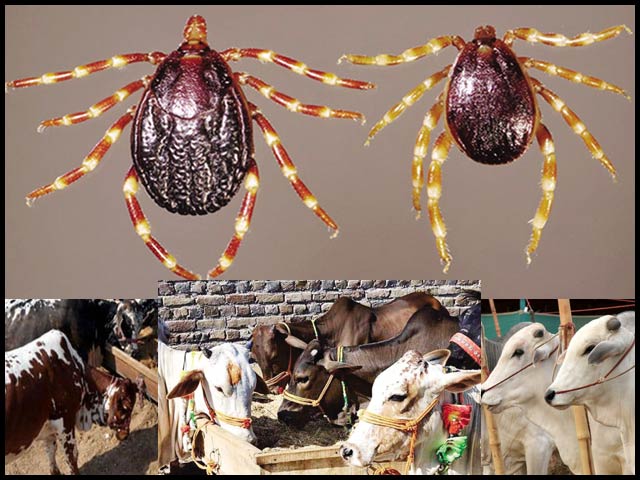Man is a creature in whose veins the element of superiority and arrogance is filled. By demonstrating it from time to time, he shows his talent. On the one hand, he is touching the heights of evolution by investing his life in conquering the earth and the sky, and this sense of superiority is the reason for his arrogance.
On the one hand, the creator of the universe made man the best of all creations and made all the creatures prostrate before him, then kept him so weak that he became helpless in front of the invisible creatures and this is enough to reveal the true reality of man. .
An example of this is all the natural disasters and epidemics that have come so far, in front of which man becomes helpless and helpless. The recent Corona epidemic also showed its devastating effects across the world. Although man was able to overcome it due to his best strategy, but after the loss of countless precious lives. Apart from this, many epidemic diseases arise from time to time and spread fear and terror among the people.
One such epidemic is the Congo virus, a disease that occurs every year across the country. A few families lose their loved ones as a result. According to the Health Department, in 2015, 56 cases of Congo virus were reported across Balochistan, in which 13 people died. In this year too, the epidemic situation has raised its head again in Quetta.
The number of infected people is above 20 in which two people have died so far while others are still struggling with it. Although so far it is limited only to a certain area, but due to carelessness, it is not unlikely that it will take an epidemic situation. So it is important to know about it and take precautions to deal with the seriousness of the situation.
What is Congo virus?
The official name of Congo virus is Crimean-Congo hemorrhagic fever. It is also called CCHF. This virus was first discovered in 1944 in Crimea, Ukraine. At the same time, an epidemic situation of this virus also arose in the African country of Congo. This virus was named after the common name of these two regions.
Types of Congo virus
1: Dengue virus
2: Ebola virus
3: Lassa virus (LASSA)
4: Rift Valley Virus
Sources of spread of Congo virus
It is an infectious disease that is transmitted to humans by ticks found on the body of cattle. These worms stick to the skin of cattle and suck their blood. Due to carelessness during the care and slaughter of cows, buffaloes and sheep, goats, ticks infected with this virus bite humans and cause transmission of the virus.
Apart from this, the disease can also spread due to the blood, other secretions, bodily contact of an infected animal or human, carelessness in caring for the patient or bathing the infected dead body. Therefore, most of the victims of this virus are butchers and animal handlers or people associated with the health sector.
Symptoms
A person infected with this virus suddenly develops a high fever, pain and spasms in the head, back and legs. Also, there are complaints of nausea, vomiting, sore throat and blisters. On diagnosis the patient has a marked decrease in white cells and platelets.
Due to which immunity decreases and due to blood thinning, fever takes the form of hemorrhagic fever. Bleeding starts from any part of the body like ears, nose, mouth and internal organs. Red spots also appear on the body. The patient’s liver, lungs and kidneys are affected and the patient may die within a week.
Diagnosis and treatment
For the diagnosis of this virus, PCR is done by taking blood samples from the infected patient. This disease is not incurable, therefore, in the light of the above symptoms, after first aid, the affected person should be immediately transferred to the tertiary care center so that timely treatment is possible.
Precautions
In the case of infectious diseases, where the treatment of infected people is necessary, preventive measures are also important for their further prevention, and the most important thing here is that there is no vaccine against Congo virus. Despite the presence of virus-infected insects, cattle do not show symptoms, so preventive measures are mandatory. The most important in this regard is the following awareness campaign by the government which should be given at the public level.
1: Mandatory use of gloves and masks while viewing, handling, slaughtering and skinning animals in cattle markets.
2: Apply anti-itch lotion.
3: Wear long-sleeved clothes to the cattle market.
4: Avoid taking children with you to the cattle market.
5: Regularly spray the livestock area with insecticides.
6: Dispose of meat carefully after slaughtering animals.
7: Before washing animal meat at home, wear gloves and cook the meat thoroughly.
8: Use gloves, masks and protective clothing when caring for infected patients.
9: Wash hands regularly with soap etc. after visiting or caring for an infected patient.
10: Dispose of the patient’s leftover food.
11: Arrange for the bath and burial of the dead from the Congo, being careful with their body fluids. Use mask and gloves during this time.
Remember, caution is better than cure.
(function(d, s, id){
var js, fjs = d.getElementsByTagName(s)[0];
if (d.getElementById(id)) {return;}
js = d.createElement(s); js.id = id;
js.src = “//connect.facebook.net/en_US/sdk.js#xfbml=1&version=v2.3&appId=770767426360150”;
fjs.parentNode.insertBefore(js, fjs);
}(document, ‘script’, ‘facebook-jssdk’));
(function(d, s, id) {
var js, fjs = d.getElementsByTagName(s)[0];
if (d.getElementById(id)) return;
js = d.createElement(s); js.id = id;
js.src = “//connect.facebook.net/en_GB/sdk.js#xfbml=1&version=v2.7”;
fjs.parentNode.insertBefore(js, fjs);
}(document, ‘script’, ‘facebook-jssdk’));



